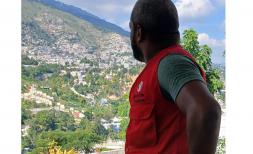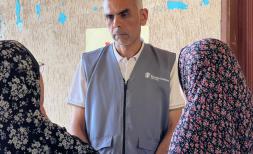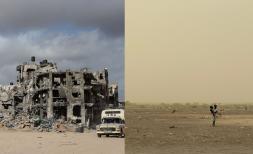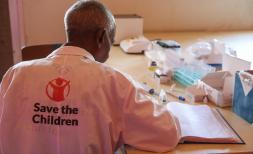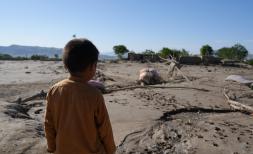After fleeing the war in Sudan myself, I can relate to children who have faced the same ordeal.

Stephen Kang singing with children in Save the Children's Child Friendly Space in Renk, South Sudan. Marie-Sophie Schwarzer / Save the Children
When the war broke out, I just didn’t know what to do. At first I thought the fighting might just be in Khartoum but it started to spread so quickly. We could see the bombs falling and could constantly hear the gun shots. My father, who was in South Sudan, told me to get out quickly. It was only going to get worse. I had no choice but to leave Omdurman and my job as a nursery school teacher behind.
People were having to pay 50,000 Sudanese pounds (US$85 or half the annual salary of a civil servant) for a car with a driver to take them to South Sudan but that is out of reach for most people. I didn’t have that sort of money but my father managed to send it to someone he knew so I could pay to join a car heading south.
{cta | We <span class="text-primary">urgently</span> need your support to protect children. | https://donate.savethechildren.org/en/donate/donate-and-help-children-crisis-countries-sudan | Donate now}
We set out on April 24. All I had with me was my backpack with a few clothes. There was no room to take anything else. You had to pay more for suitcases. About 17 of us were packed into that car – inside, on the roof, we were everywhere.
I have had to move multiple times before. I am a South Sudanese citizen. I was born in Sudan in 2000 but relocated to South Sudan in 2006 to escape the violence. When South Sudan gained independence in 2011, we believed it would bring a fresh start, but our hope was short-lived. In 2013, my family and I had to move back to Sudan due to the resurgence of violence. Moving has become a never-ending story for me, as it has for countless others in Sudan and South Sudan.
It took us about two days by road to get to Rabak (in south-eastern Sudan). That is about 300 kms and should be a one-day journey but we had to zig-zag all the way to avoid roadblocks. We kept seeing and hearing the gunfire all the way. I was terrified we would not make it and I was so glad to get to Rabak and see my father waiting for me.
I am now with my family in Renk and I started working for Save the Children last August. I love working with children and I really understand what so many of them have been through. I can relate to them. So many of them have seen dreadful things before getting to the two transit centres set up here as temporary stops for people arriving from Sudan. Every day more people come and every day more people move out to continue their journeys to other places in South Sudan if they are returnees or to the Maban refugee camp if they are refugees.
My job is to run singing, dancing, and other fun activities for children at the child friendly spaces Save the Children run in the transit centres. Some of the children arrive here in total shock. They are totally stressed. They don’t want to talk and don’t want to mix with other children. They have seen things along the way that they just can’t understand and you just can’t imagine. Some of the children draw pictures of guns and shooting and of helicopters.
It takes a while but I try to get them involved and to join the games. I am so relieved when a child starts to talk again, to laugh again. I am good at playing the clown and they like that. They will run after me in the transit centre and want to play more games with me and mess about. They are children. They want to have fun.
I really enjoy working for Save the Children and I am hoping to go to university.
